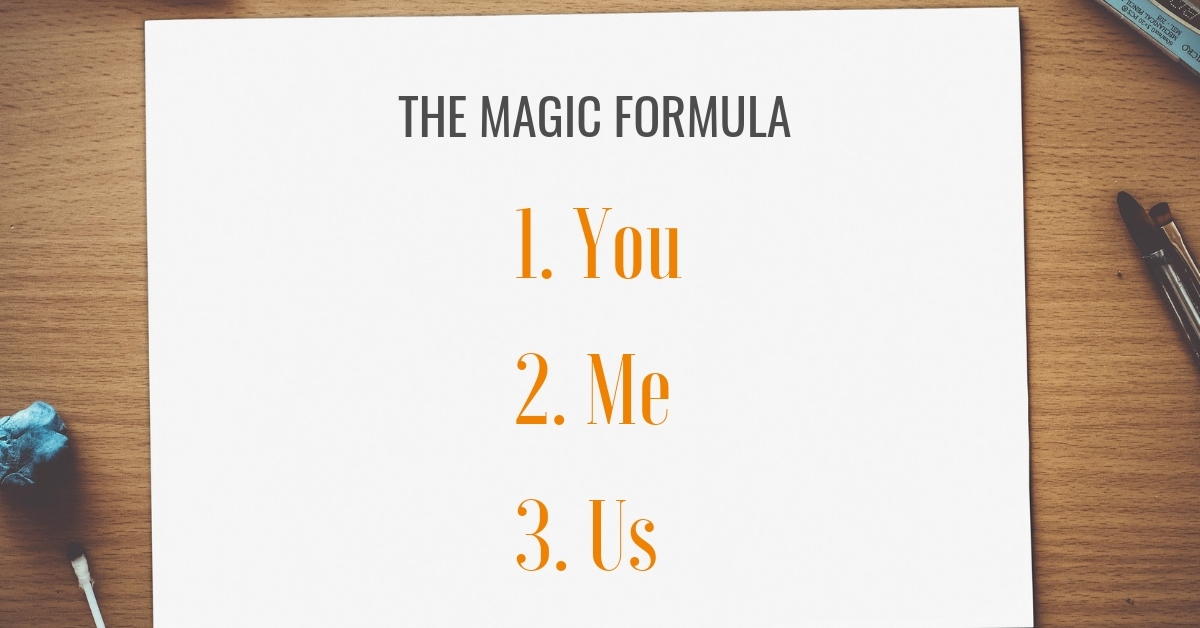How many times have you wanted to send a convincing message to a customer or partner, but you struggled to find the right words? If you’re like most entrepreneurs and business owners, you often know exactly what you want from your reader, but you aren’t sure how to choose the magic words that can sell your product or idea without sounding pushy. Here’s a simple formula that can help you smooth the path to a new partnership, a single sale, or a long-term customer relationship. Use these steps to highlight your key points and explain how an agreement can benefit both of you!
Here are examples of situations where you might need to sell yourself in a simple and effective way:
- Request a meeting: You want to have a meeting with a potential client, so how can you convince this person to make time to meet you?
- Sell a service or a product: If you need to sell a service or a product, how can you do this in writing?
- Get featured on a podcast show or be invited to speak at an event: What should you say to make this person want to invite you?
Selling is about knowing the real needs of your clients.
This magic formula is very simple: divide your writing into three distinct paragraphs
1. “You” – Focus on your audience and their interests
When you write any message to a potential client or contact, you’ll need to focus on that person’s interests, not just on your own. (Hopefully your interests are shared, and a win for them IS a win for you!)
Your efforts to sell, partner, or engage should focus on the person you want to convince.
In this paragraph, speak about your client or the person you’re reaching out to. Show that you’ve been paying attention and spending time getting to know who they really are, what they do, and what they need.
Keep your text short and be very precise. Give a piece of information about them that not everyone can know, or share with them something that makes them feel “as if you were in their head”.
This first paragraph is designed to capture their attention. You can for instance use humor if you like, but above all, focus on information that shows that you know your reader.
Example:
“Dear xxx, It has been fascinating to watch your company and your team grow so rapidly in the past year. Congratulations for all your successes and the impact you are making for small businesses! I have been particularly impressed with the new xyz feature you have developed that provides business owners with so much more security. I can imagine that your growth must come with some challenges such as hiring the right people and getting them to be operational and integrated to the team as quick as possible”.
Be specific and show real attention.
2. “Me” – Demonstrate that your offer meets the needs of your audience
Although this paragraph is called “Me”, because this is where you explain your offer, it is in fact not really about you. It is about how or why your offer can be useful to your reader!
As you describe your offer, explain why this is the perfect solution for the person you are reaching out to. You can also use this part to show them the results you can promise and how these results can solve their problems.
Example:
“In the past years, we have worked with over 50 companies, helping them to hire and manage their staff with an innovative online system that combines tailor-made trainings that fit each company’s internal processes. Our services include:
- Xyz which allows you to xyz (the needs or results you can promise to them)
- Xyz which allow you to xyz (the needs or results you can promise to them)”.
3. “Us” – Show the benefit for your audience and call-to-action
The last paragraph, called “Us”, explains how you and your client or partner stand to mutually benefit from this cooperation.
This is also where you explain the action you’d like to take together and how both of you can advance the discussion or the decision.
In fact, you should always finish with a “call to action” that is really turned towards the interests of the person you are contacting and that is as easy as possible for this person to take.
An important tip: avoid a request that requires a “yes” or “no” answer. Instead of a closed question, offer two options to choose from.
Example:
“I know you’re very busy and I respect your time. I can show you in 15 minutes how this works, I can send you a recorded video, or we can schedule a quick call to show you live how it works and answer any questions you might have. Please let me know which one of these options works best for you?”
Give two options to help make a decision.
If you really want to convince this person, offer something valuable for free before you even talk to show the value of what you have to offer. For instance, with the example illustrated above, you could offer a 30-day trial with no charge or commitment.
Once you adopt this three-step formula and practice it a few times, you’ll always know what to say when reaching out to a potential client or partner!
One more tip!
This formula also works really well for your About Page on your website! Your About Page should always start by explaining what your audience is looking for. Then follow the two next steps described above! The call to action in this case should be either to download a free resource or sign up for a free call or trial.
Take Action Now
I hope this was helpful to you. Let me know in the comments section: For what situations would you use this method?
Download your free guidebook to turn your business idea into revenue and impact!



One Response